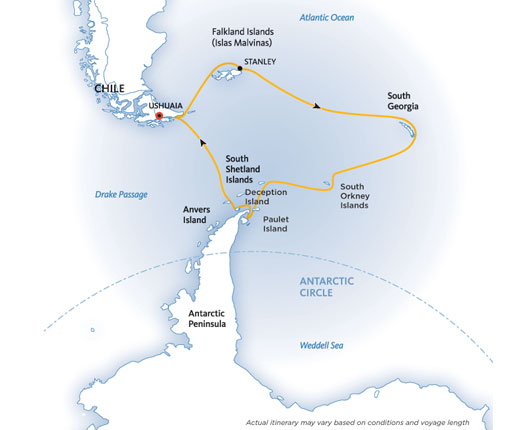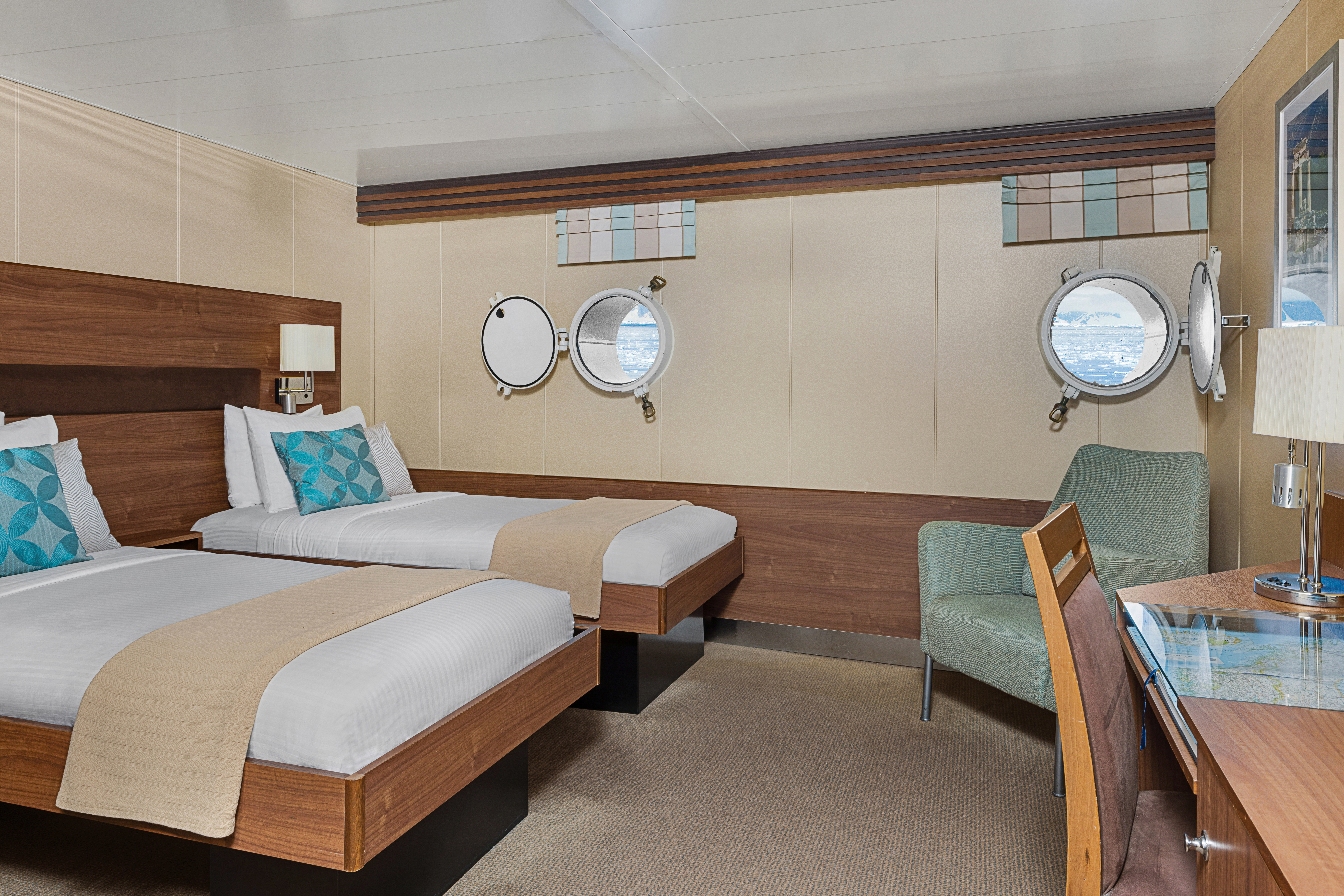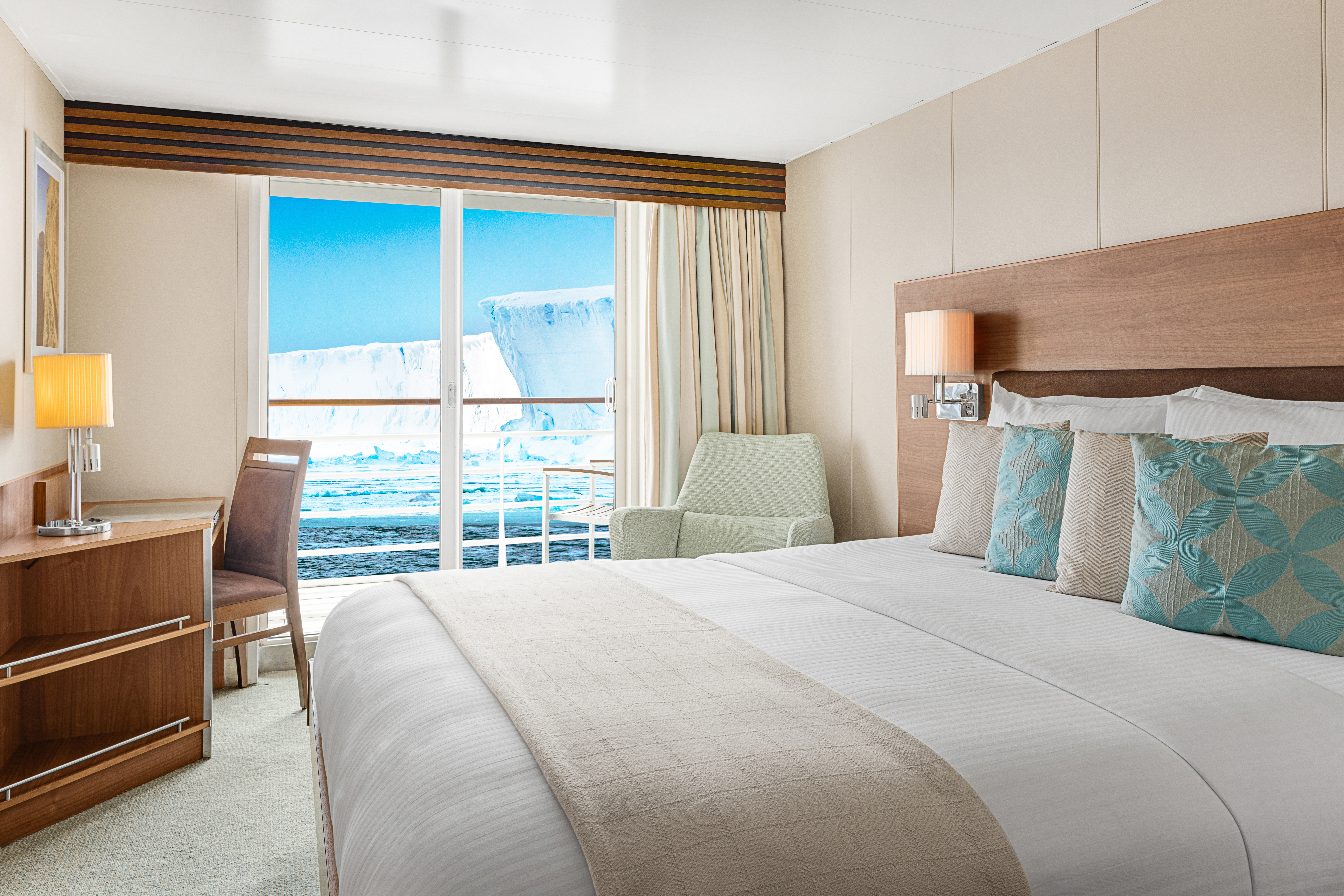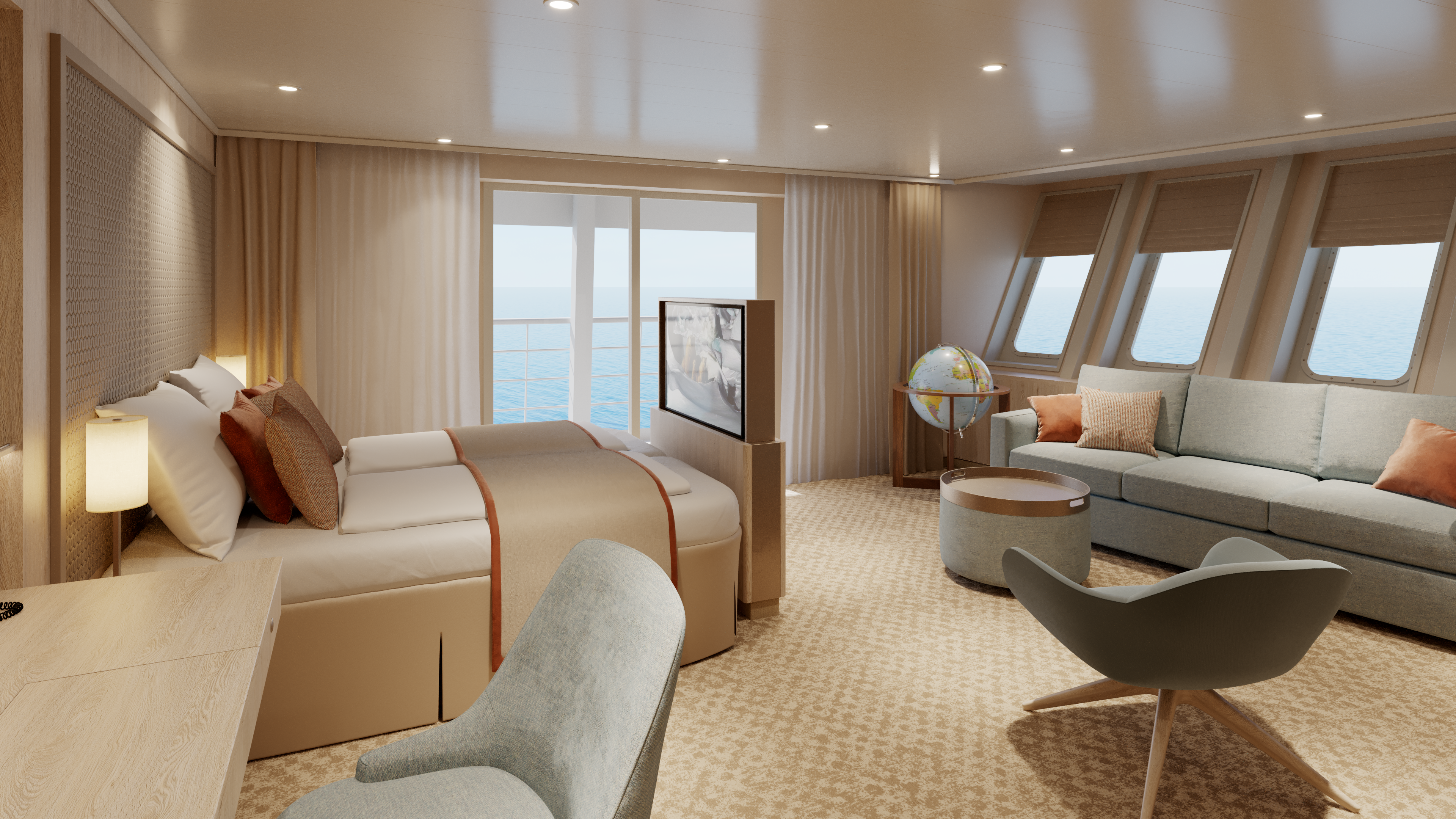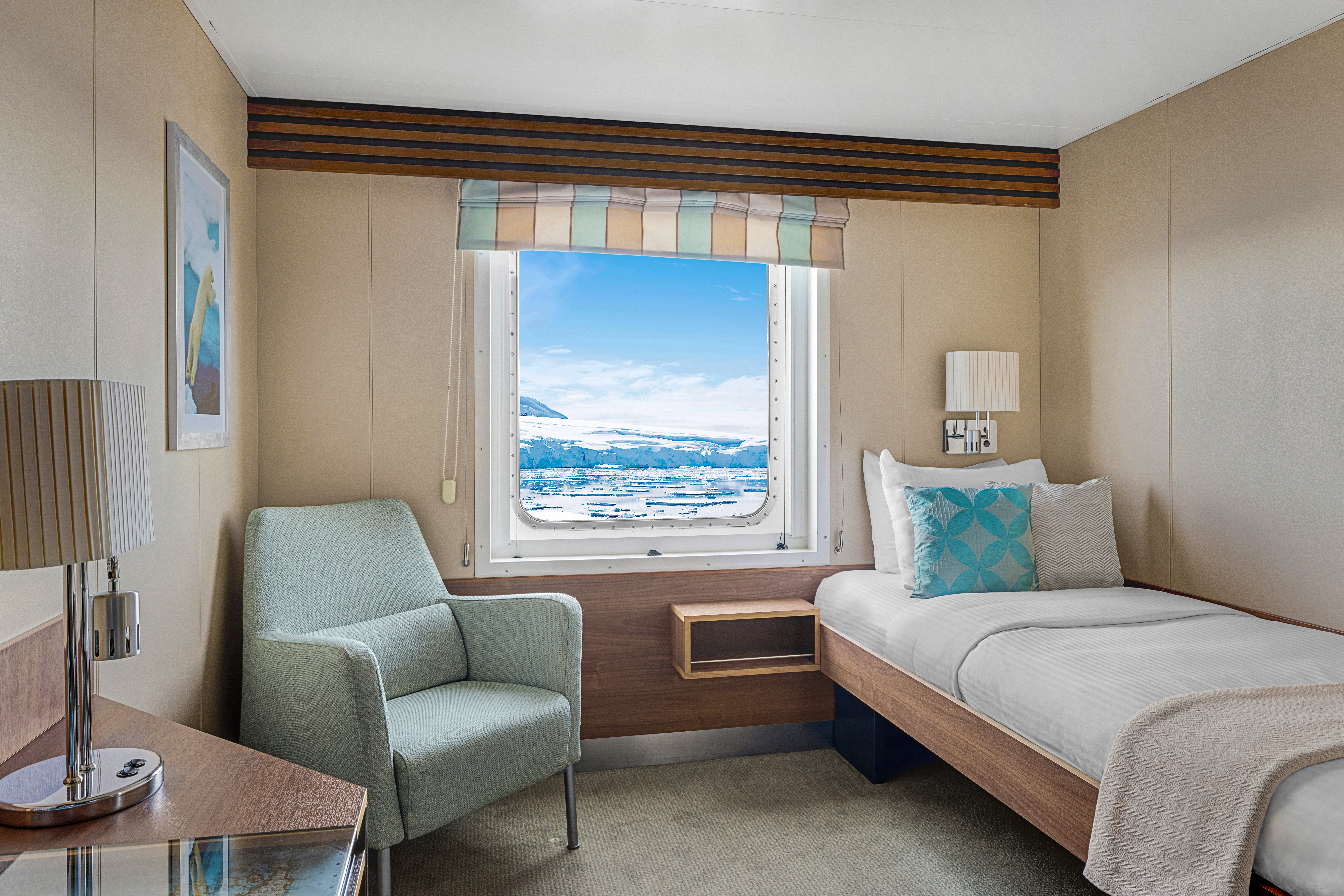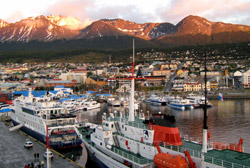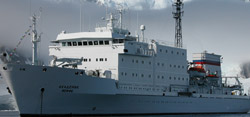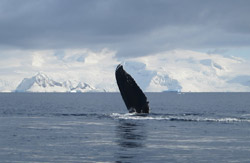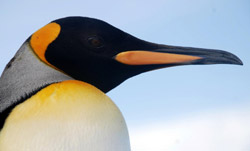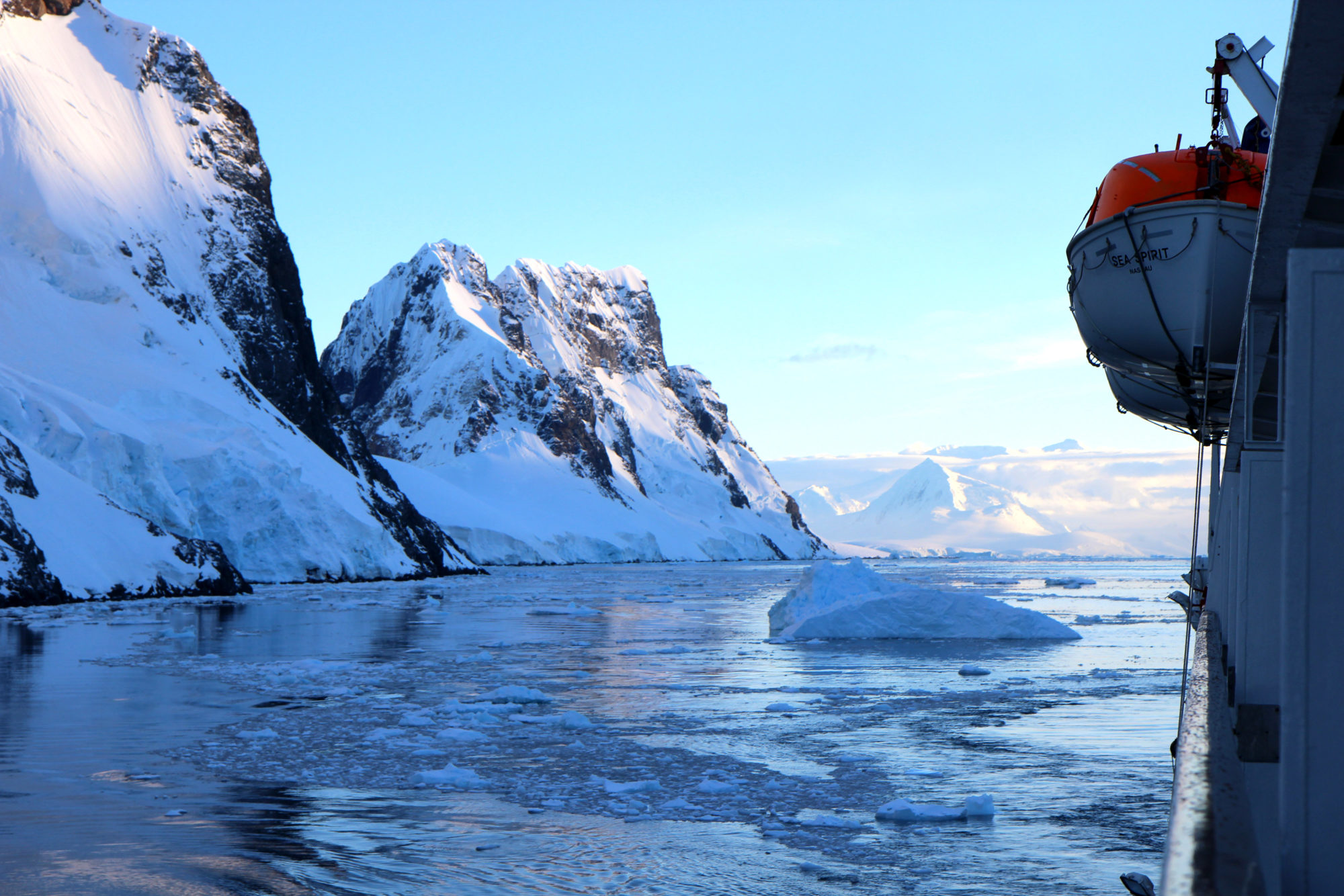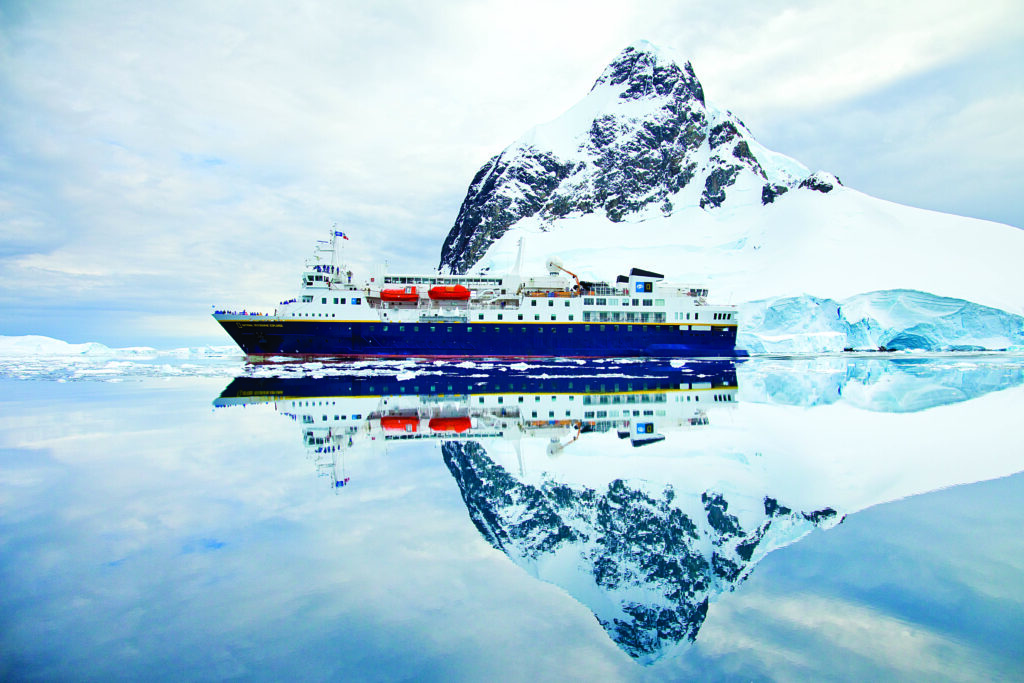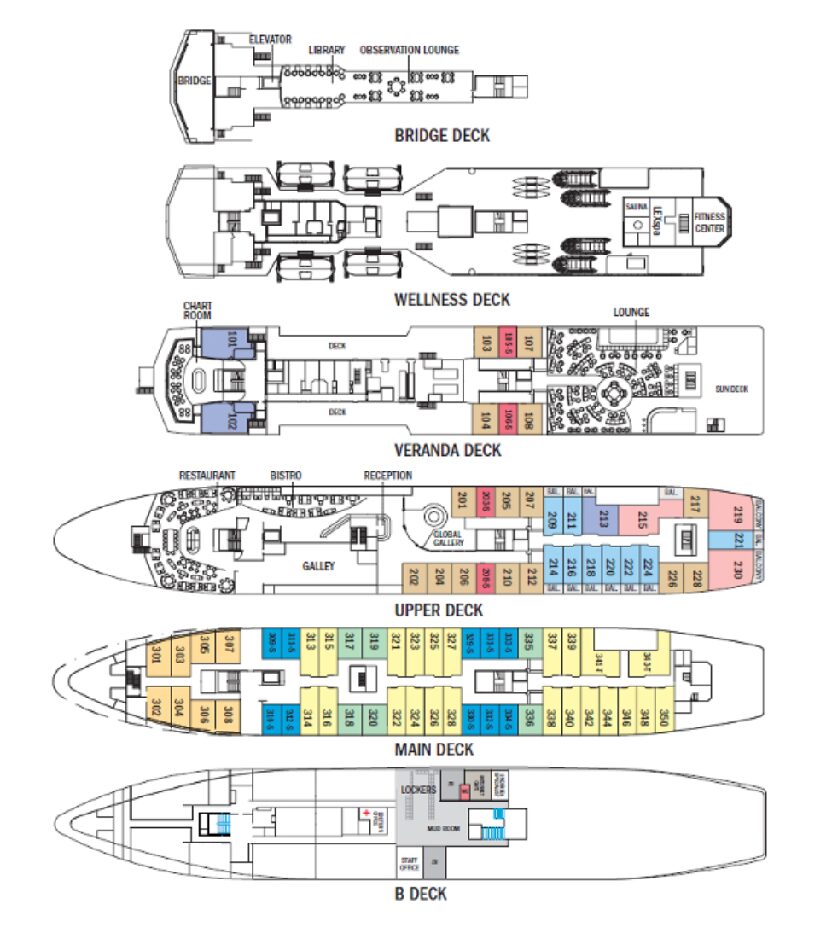Public Areas
Reception: Three dining areas; global gallery; library, B&H Photo locker; 24-hour Bistro area beverage bar; lounge with bar and state-of-the-art presentation facilities; observation lounge; mudroom with lockers for expedition gear; plus open access to the Bridge, the Captain, officers and on-duty wildlife spotters.
Meals
Meals are served in the dining room, Bistro bar, or the Observation lounge, at a single seating with unassigned tables for an informal atmosphere and easy mingling. Menus feature sustainable choices, local where possible
Cabins
81 outside cabins. All cabins face outside with windows or portholes, private bathroom, and climate controls. Cabins are equipped with Wi-Fi, multiple electrical outlets, USB outlets, full length mirror and phones. TV featuring entertainment on demand, live feed for onboard presentations, bow camera and ship’s position. Luxury bed linens and pillows. Botanically inspired shampoo, conditioner, shower gel, and lotion are all available in cabin bathrooms, as well as an Expedition Essential Kit. Hair dryers, complimentary insulated water bottles and a National Geographic Atlas is available in each cabin.
Special Features
A full-time doctor, undersea specialist, National Geographic photographer, Lindblad-National Geographic certified photo instructor and video chronicler, internet café and laundry. Enjoy a session in the topside library with a good book, or with the book in your lap, eyes trained on the horizon.
Wellness
A glass-enclosed fitness center, outdoor stretching area, a LEXspa treatment room and sauna, staffed by wellness specialists.
Self-Disinfecting
Ships ACT Clean CoatTM is a light-activated, self- disinfecting cleaning process that continuously breaks down viruses, bacteria, mold, and airborne allergens across all ship surfaces. Not only does this create a cleaner, healthier shipboard environment for guests and crew alike, but this non-toxic, chemical- free system also saves more than one million gallons of water each year in our cleaning procedures, and reduces our carbon footprint as well as the amount of plastic and waste in our supply chain.
Expedition Equipment
Zodiac landing craft, a fleet of double kayaks, a crow’s nest camera, a hydrophone, underwater video cameras, video microscope, and an ROV. Plus, for South Pacific voyages: snorkeling gear for all guests, scuba gear for a number of pre-qualified guests, stand-up paddleboards, glass-bottom Zodiac, and splash-cam.

